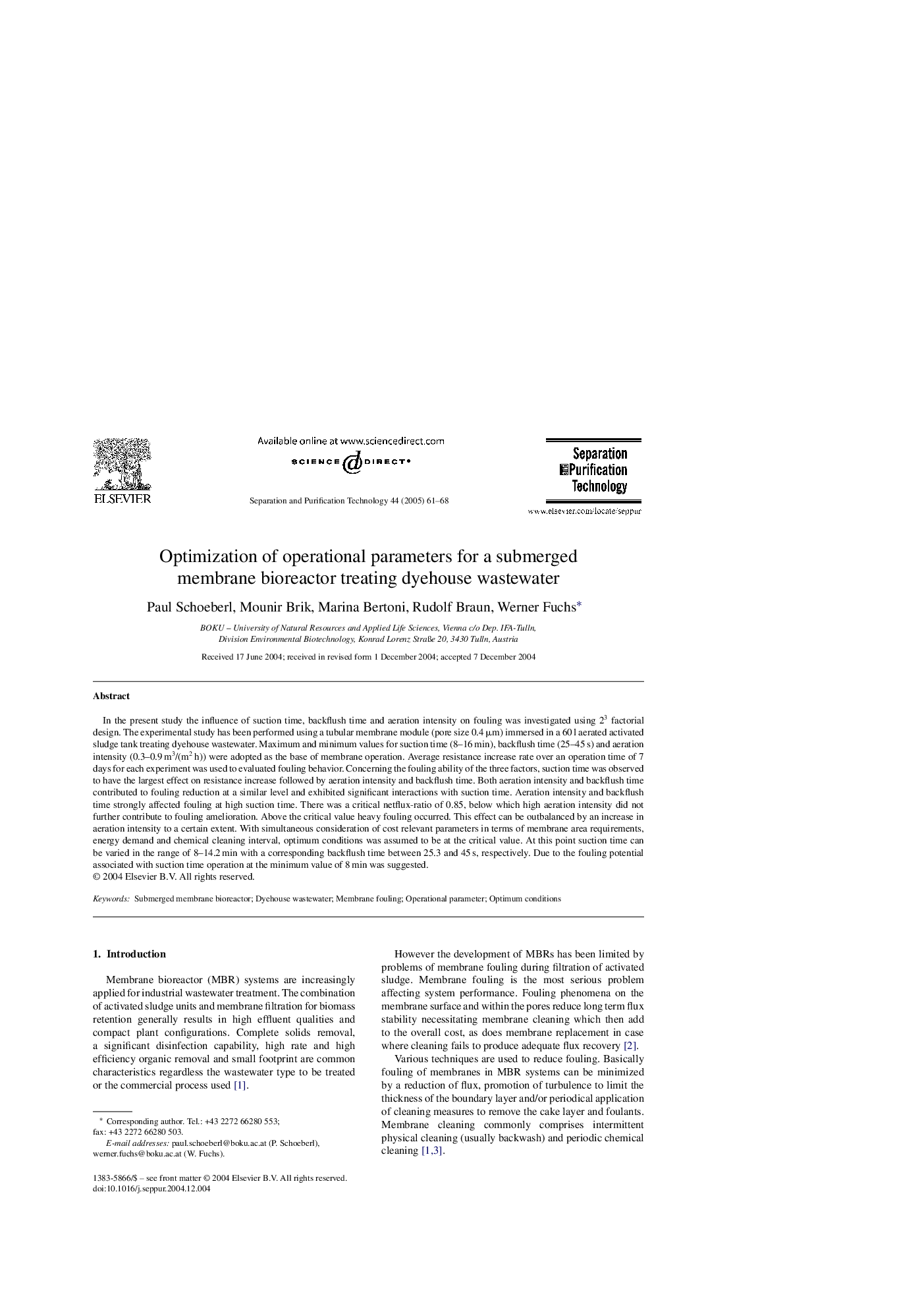| Article ID | Journal | Published Year | Pages | File Type |
|---|---|---|---|---|
| 10389886 | Separation and Purification Technology | 2005 | 8 Pages |
Abstract
In the present study the influence of suction time, backflush time and aeration intensity on fouling was investigated using 23 factorial design. The experimental study has been performed using a tubular membrane module (pore size 0.4 μm) immersed in a 60 l aerated activated sludge tank treating dyehouse wastewater. Maximum and minimum values for suction time (8-16 min), backflush time (25-45 s) and aeration intensity (0.3-0.9 m3/(m2 h)) were adopted as the base of membrane operation. Average resistance increase rate over an operation time of 7 days for each experiment was used to evaluated fouling behavior. Concerning the fouling ability of the three factors, suction time was observed to have the largest effect on resistance increase followed by aeration intensity and backflush time. Both aeration intensity and backflush time contributed to fouling reduction at a similar level and exhibited significant interactions with suction time. Aeration intensity and backflush time strongly affected fouling at high suction time. There was a critical netflux-ratio of 0.85, below which high aeration intensity did not further contribute to fouling amelioration. Above the critical value heavy fouling occurred. This effect can be outbalanced by an increase in aeration intensity to a certain extent. With simultaneous consideration of cost relevant parameters in terms of membrane area requirements, energy demand and chemical cleaning interval, optimum conditions was assumed to be at the critical value. At this point suction time can be varied in the range of 8-14.2 min with a corresponding backflush time between 25.3 and 45 s, respectively. Due to the fouling potential associated with suction time operation at the minimum value of 8 min was suggested.
Related Topics
Physical Sciences and Engineering
Chemical Engineering
Filtration and Separation
Authors
Paul Schoeberl, Mounir Brik, Marina Bertoni, Rudolf Braun, Werner Fuchs,
